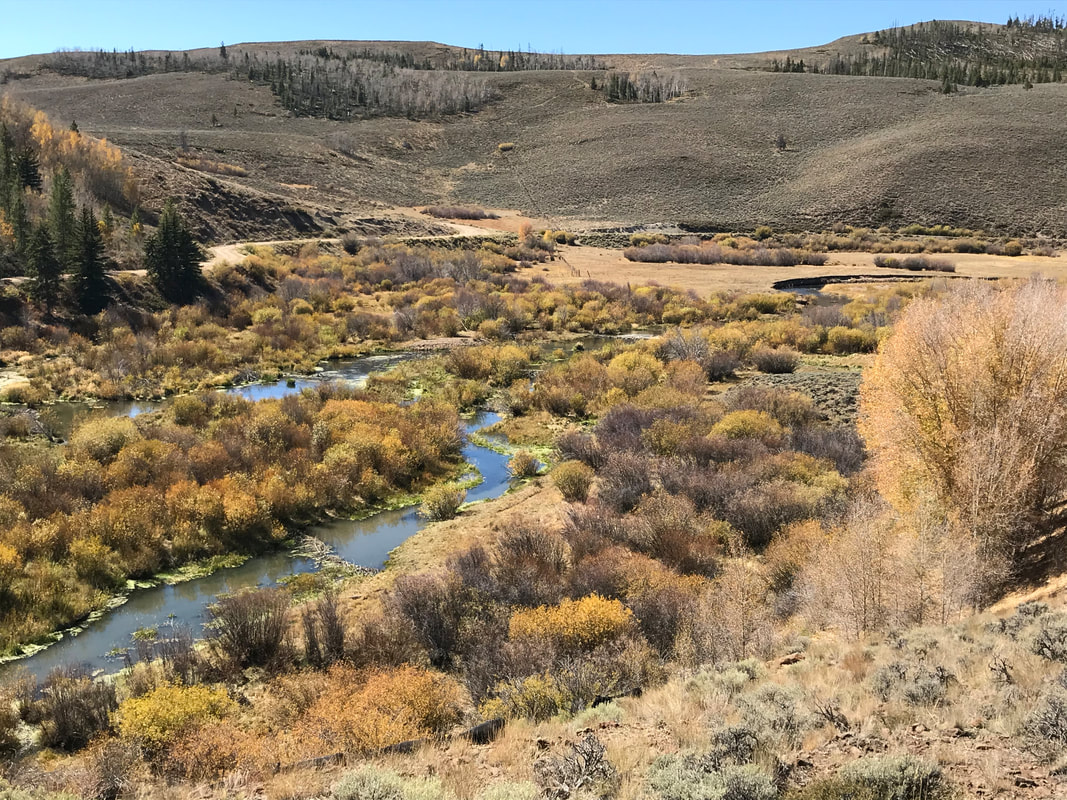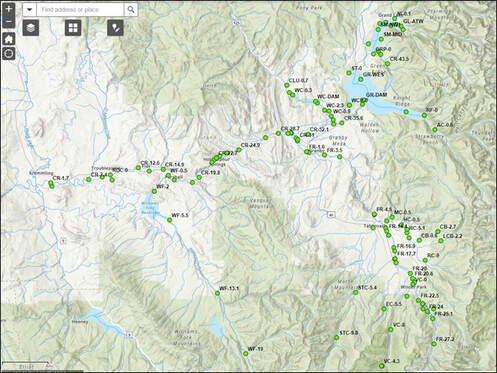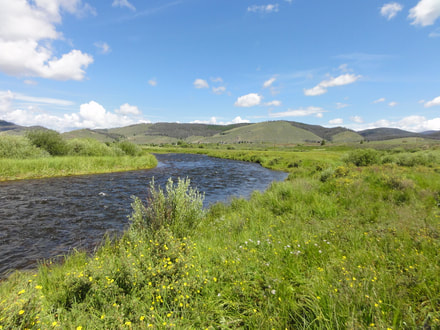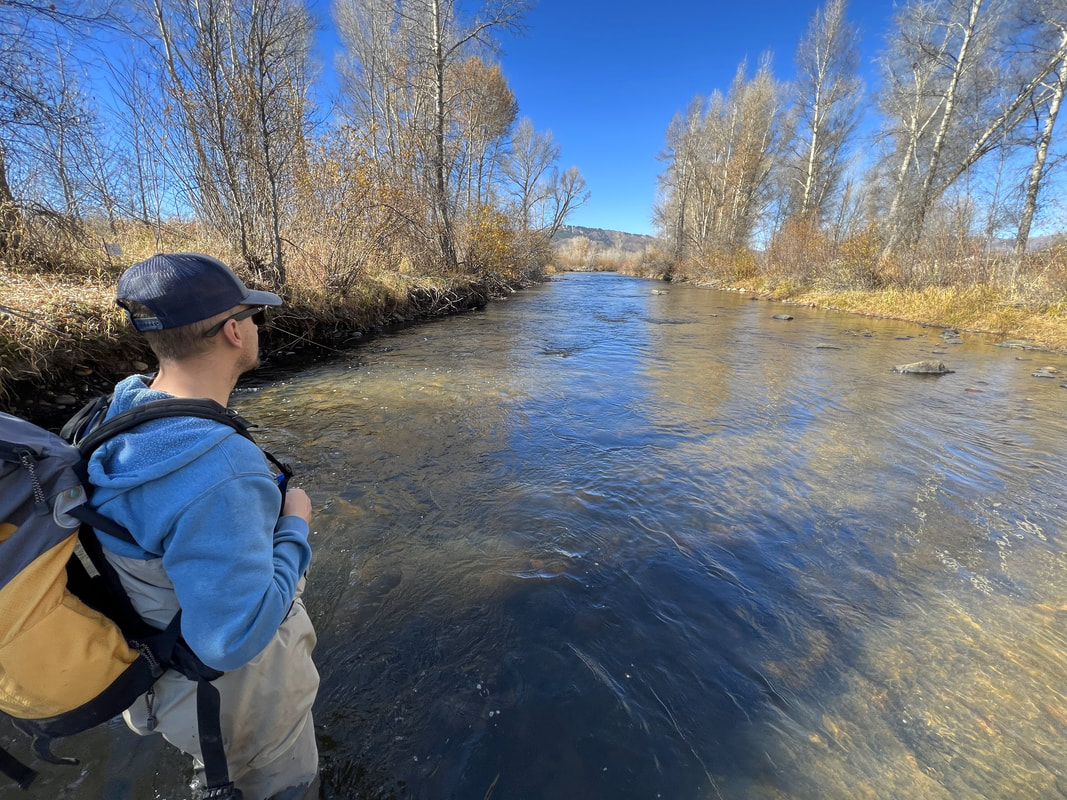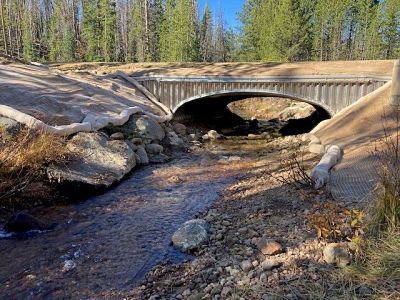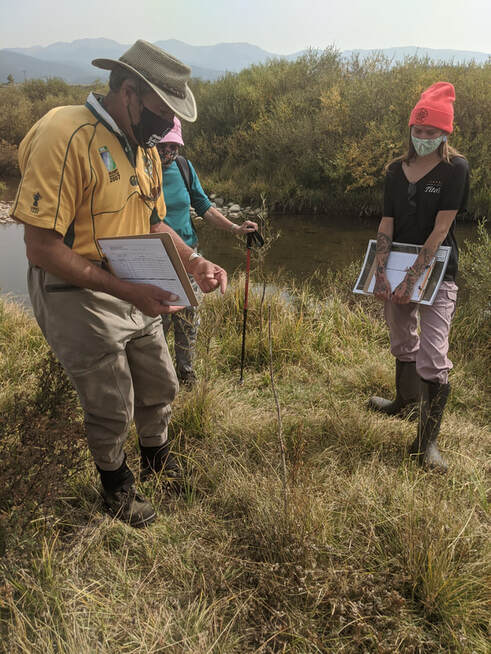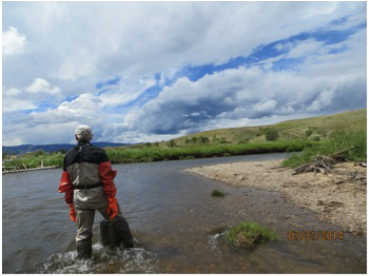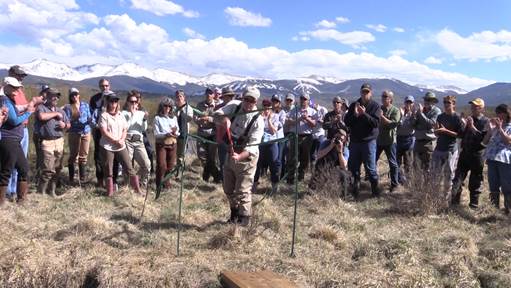Our success is measured by our projects.
Grand County Learning By Doing's Cooperative Effort relies on the Grand County Stream Management Plan (GCSMP) as a guide for project selection and as a source of comprehensive data on stream health in Grand County. The GCSMP identifies and ranks opportunities for stream restoration and provides recommendations on monitoring sites and parameters based on years of data collection and analysis in the field. The Learning By Doing Committee selects projects based on recommendations from the GCSMP, available resources, involvement of affected landowners and other considerations. Download our guidelines for public/private partnerships here.
Current LBD Projects
Kaibab Park Stream ImprovementThis project aims to improve aquatic habitat for fish and benthic macroinvertebrates in a segment of the Fraser River in the Town of Granby at Kaibab Park. This artificially straight section of the Fraser River lacks sinuosity, which contributes to a lack of stream bed features and aquatic habitat diversity. Once completed, this river section will support a narrowed channel with cooler stream temperatures, increased sediment transport, improved macroinvertebrate habitat, and increased fish density and biomass. We are currently working with Stillwater Sciences to design the aquatic habitat improvements and will seek federal funding for the project's construction. Funding for the design is provided by CWCB and the Windy Gap Fund.
Cabin Creek Aquatic Organism Passage ProjectMost culverts were installed in the 1900s without concern for aquatic habitat. These old culverts are like waterslides for fish, who are able to go down them but not upstream, which impacts their ability to get food and spawn. The existing culvert where Forest Service Road 128 crosses Cabin Creek is a barrier to fish movement, and the replacement with an Aquatic Organism Passage (AOP) culvert will allow for fish passage for native Colorado River Cutthroat trout and amphibians.
The Cabin Creek AOP project is a great example of Learning By Doing at work. LBD’s Technical Committee identified this project as one that would fulfill the goals of LBD and in 2020 the Management Committee approved this project. In 2020, the USFS approved the design and engineering and Trout Unlimited secured funding from the U.S. Fish and Wildlife Service. Denver Water provided all labor and equipment for implementation and Grand County contributed materials. The Cabin Creek AOP project is another example of what can be accomplished through LBD’s collaborative efforts. |
Willow Creek RestorationThis project will be designed to maintain and enhance floodplain
connectivity, improve water quality, and improve fish habitat downstream from Willow Creek Reservoir. The project area includes Willow Creek and about one mile of Church Creek, a tributary to Willow Creek, within the newly designated Willow Creek Reservoir State Wildlife Area. Process-based restoration strategies will be incorporated into the design, including beaver dam analogs, post-assisted log structures, live willow baffles, toe-wood bank treatments, grading for floodplain connectivity, large wood structures, and revegetation. Thirty percent design is complete and we are working with GEI Consultants on the final design. The final design was funded by CWCB and the Windy Gap Fund. Grand County Stream Management Plan UpdateSince the inception of the 2010 GC SMP, changes have occurred throughout Grand County on both minor and landscape scales that warrant a necessary reexamination of the technical aspects of the SMP to better reflect current conditions. In addition, a significant amount of new data has been collected throughout the CEA that would support a robust watershed assessment to improve characterization and prioritization of areas of concern compared to the existing GC SMP. The Intergovernmental Agreements that founded LBD state that it is the task and responsibility of LBD to update the GC SMP.
>>> See all Stakeholder Outreach Program documents by clicking here. Fraser Flats River Habitat ProjectThe Fraser Flats River Habitat Project is one of the Grand County Learning By Doing team's first collaborative projects. Fraser Flats is a public-private partnership to maximize efficiencies and benefit river health. Revegetation efforts with 150 volunteers took place in spring 2017 and river construction wrapped up in the fall. On May 16, 2018, a dedication ceremony marked the opening of a 0.4-mile public section for fishing. View the Colorado River Headwaters Chapter of Trout Unlimited's video of the revegetation efforts here.
Results of 2017 Fraser Flats monitoring can be found here. |
Stream samplingLearning By Doing implements an annual monitoring program that assesses stream temperature, habitat, stream flows, and water quality in several locations in the Fraser River and Colorado River, as well as its tributaries. It also tracks monitoring efforts of other entities to document changes from year to year. Results from sampling inform decisions around what actions are needed to maintain or improve the health of the aquatic environment in the Fraser and Colorado river basins. The addition of fish population studies, in collaboration with Colorado Parks and Wildlife, provide a comprehensive assessment of Grand County's aquatic environment.
LBD Restores Section of Fraser RiverLearning By Doing restored 0.9 miles of a distressed section of the Fraser River in Grand County to benefit aquatic habitat. On May 16, 2018, the collaborative group of water stakeholders that form Learning By Doing opened 0.41 miles of the restored river for public fishing . The Fraser Flats River Habitat Project represents a new era of water cooperation among East Slope water providers and West Slope agencies and conservation groups. Be sure to fill out CPW's angler survey when you fish the public section as it will help us better manage the fishery.
|
Fraser River sediment ponds A joint project with the Colorado Department of Transportation have partnered to remove traction sand used along Highway 40 from the Fraser River. Using diversion ponds, they trapped the sand and let it settle. In 2019, CDOT hauled off some 330 tons of sediment. The project improved water quality and aquatic habitat. Monitoring downstream of the sediment pond shows significant habitat improvement.
Post-Project Willow Count for Fraser Flats River Habitat ProjectIn September 2020, a survey of the surviving willow stakes planted in 2017 as part of Learning By Doing’s Fraser Flats River Habitat Project was conducted to help measure the success of the project’s revegetation effort. Volunteers from LBD partners Trout Unlimited and Grand County Water Information Network (GCWIN) combed both sides of the 0.91-mile river section upstream of County Road 83 near Tabernash to see how many of the nearly 2,500 willows planted along the riverbanks remain.
The intention behind the willow plantings is to restore robust aquatic and riparian habitats and the associated communities of fish and aquatic insects, provide bank stabilization and increase shade cover to lower stream temperatures. The group determined that the willow survival rate after three years was 49 percent. A replanting effort for 2020 has been postponed due to the COVID-19 pandemic. |
